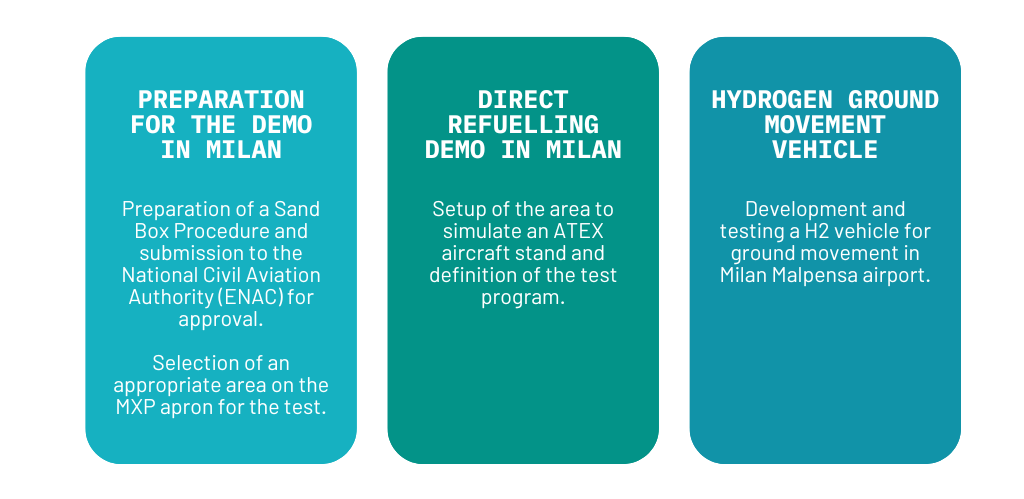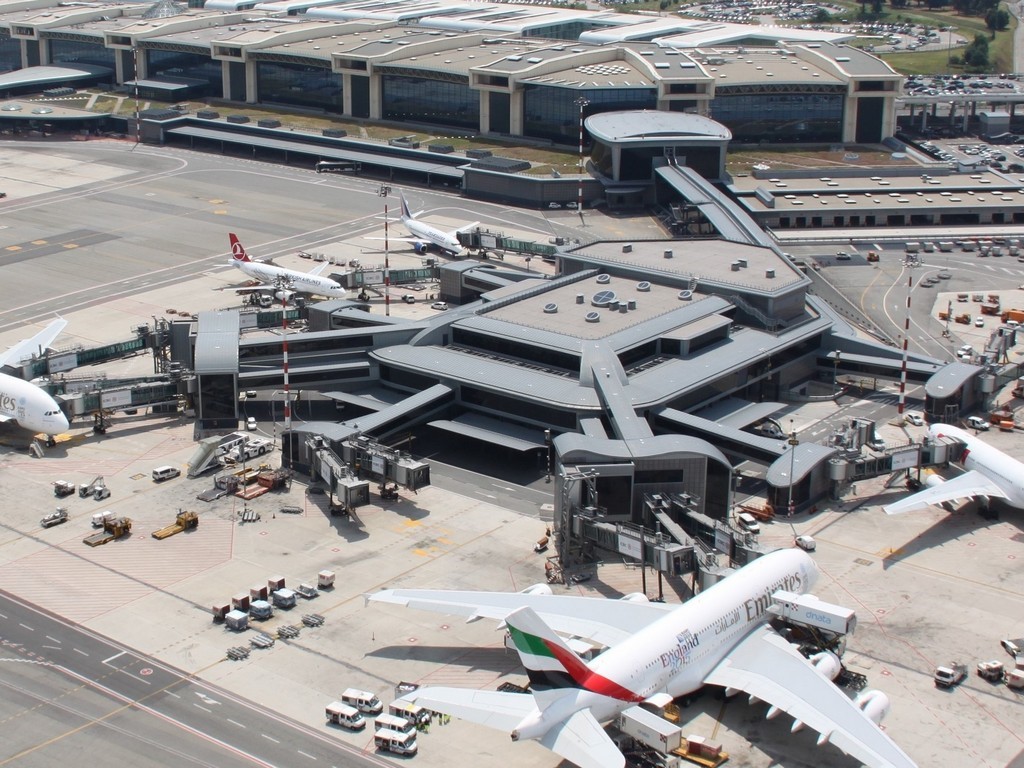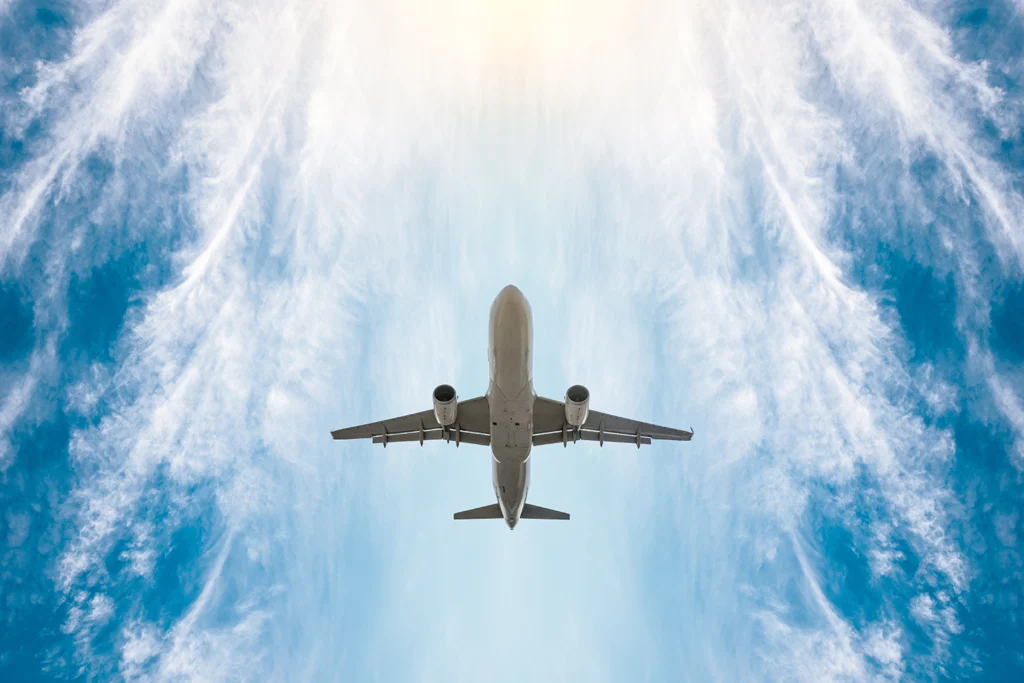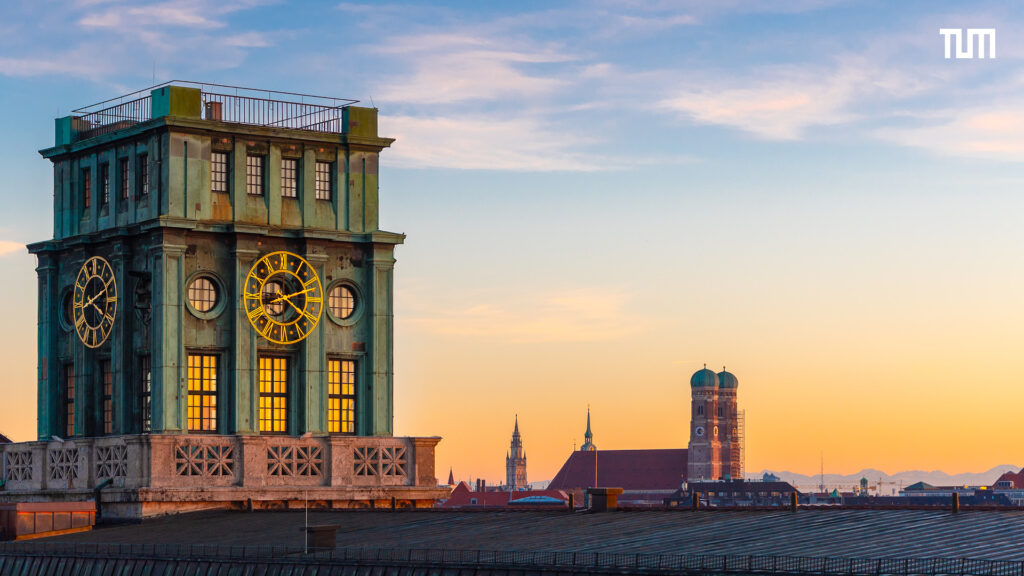- The main challenge for SEA in the ALRIGH2T project is to assess the performance of liquid hydrogen refuelling in terms of reliability, operability, boil-off, safety, and cost.
Milan Malpensa Airport is setting a new standard in the aviation industry through its contributions to the ALRIGH2T project, positioning hydrogen as a pivotal energy source for the future of air travel. By not only being a consumer but also a key player in the development of the hydrogen supply chain, Malpensa is transforming into a central hub for hydrogen exchange and distribution. The airport will seamlessly integrate renewable energy solutions such as Sustainable Aviation Fuel (SAF), electricity, and hydrogen, creating a sustainable energy ecosystem for both aviation and the surrounding region. Through strategic partnerships with aircraft manufacturers, industry leaders, and academic institutions, Malpensa is helping accelerate the adoption of hydrogen-powered aviation systems and infrastructure, driving innovation in the sector.
SEA Milan Airports: Gateway to growth and connectivity
SEA Milan Airports manages Milano Malpensa and Milano Linate, ranking among the top 10 airport operators in Europe for cargo and passenger traffic. It is Italy’s second-largest airport operator in terms of passenger numbers and the leading hub for cargo transport.
By expanding and enhancing its airports, SEA fosters regional growth—supporting local communities, boosting the economy, creating jobs, and strengthening Milan’s role as a key global gateway. SEA’s mission is to drive this growth sustainably, ensuring broad stakeholder engagement and environmental responsibility.
Behind SEA and supporting ALRIGH2T, there is a dedicated team of managers, engineers, and technicians responsible for project coordination, safety and security, aircraft operations, and the efficient movement of vehicles and aircraft on the apron—all contributing to a seamless and secure travel experience.
Milan Malpensa, core pilot for ALRIGH2T hydrogen demos
Technological advancements from ALRIGH2T will be demonstrated in real airport conditions, including a pilot at Milan Malpensa Airport to study, validate, and showcase hydrogen refuelling for aircraft. At Malpensa, SEA will test “direct” liquid hydrogen refuelling while defining operational protocols to ensure safe and efficient operations.
Their challenge within the framework of the project is to assess the performance of liquid hydrogen refuelling in terms of reliability, operability, boil-off, safety, and cost. Based on the results obtained from the Milan Malpensa pilot, it will be possible to evaluate the potential of liquid hydrogen as a new energy vector to decarbonize the aviation sector and promote more sustainable mobility at airports, positioning them as hubs for the development and expansion of the hydrogen economy.
To achieve these objectives, the company has a key responsibility in the following tasks:

As part of the last task, SEA will provide gaseous hydrogen for refuelling the H2 vehicle for ground movement, with the demonstration including a real operation on the apron. The data collected will be used to optimize the H2 powertrain and control strategies.
Advancing hydrogen solutions: A Key Contribution to the EU Green Deal
Malpensa Airport is actively involved in EU-funded hydrogen technology and decarbonization projects, including OLGA and TH2ICINO. First, The OLGA project, co-financed by Horizon 2020, focuses on transforming airports into sustainable hubs by integrating renewable energy for hydrogen production, optimizing operations to reduce emissions, and establishing zero-emission infrastructure. Milan Malpensa is developing a 0.5 MW green hydrogen plant to power airport activities and refuel hydrogen-powered buses, with a demo planned for the 2026 Winter Olympics.
In the TH2ICINO project, co-financed by Horizon Europe, Milan Malpensa is contributing to building a hydrogen ecosystem in the region, covering production, storage, transportation, and refueling. The project aims to produce 500 tons of green hydrogen annually, reducing CO2 emissions by 4,400 tons per year, and establishing a Hydrogen Valley to promote regional decarbonization.
Additionally, a partnership between SEA and EDISON Next plans to build a hydrogen refueling station in Malpensa’s Cargo area, serving ground operations for passenger and cargo services. This station, co-financed by the Italian Recovery Fund, will position the airport as a key hub in the Mediterranean corridor.
Milan Malpensa Airport is establishing a blueprint for the future of sustainable aviation, contributing to the EU’s decarbonization goals, and positioning itself as a leader in the global hydrogen revolution. Through projects like ALRIGH2T, the airport’s commitment to sustainability and innovation is transforming aviation practices, promoting a greener future for both the sector and the surrounding region.

Milan Malpensa Airpot.



